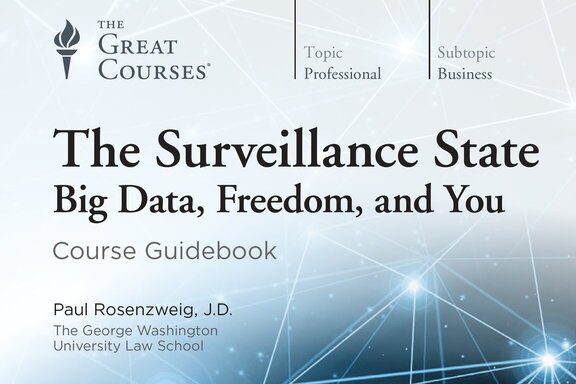Paul Rosenzweig, J.D., is a Professorial Lecturer in Law at The George Washington University Law School, where he lectures on cybersecurity law and policy. He is a cum laude graduate of The University of Chicago Law School. Mr. Rosenzweig has an M.S. in Chemical Oceanography from the Scripps Institution of Oceanography (a department of the University of California, San Diego) and a B.A. from Haverford College. Following graduation from law school, he served as a law clerk to the Honorable R. Lanier Anderson III of the United States Court of Appeals for the Eleventh Circuit.
In his non-academic endeavors, Mr. Rosenzweig is the founder of Red Branch Consulting, PLLC, a homeland security consulting company, and a Senior Advisor to The Chertoff Group. He formerly served as Deputy Assistant Secretary for Policy in the U.S. Department of Homeland Security, and he is currently a Distinguished Visiting Fellow at the Homeland Security Studies and Analysis Institute. Mr. Rosenzweig is a member of the American Bar Association Standing Committee on Law and National Security, a Senior Editor of the Journal of National Security Law & Policy, and a Visiting Fellow at The Heritage Foundation.
Here are my favorite takeaways from watching, Dr. Paul Rosenzweig’s Great Courses Class: The Surveillance State: Big Data, Freedom, and You.
Three trends are driving the growth of surveillance capabilities.
- The proliferation of new sensor platforms.
- The increased power of data analytics to do correlation analysis of disparate data streams.
Powered by Moore’s law—the seemingly perpetual doubling of processing capacity—algorithms today can find patterns in immense volumes of data.
- The ever-decreasing costs of data storage.
Technology vs Law
- Moore’s law reflects an observation made by the co-founder of Intel, Gordon Moore, about integrated circuits. In the mid-1960s, he noticed that the number of transistors that could fit on a chip doubled every year or two, and he predicted that it would continue to double for the foreseeable future. To date, his prediction has been remarkably accurate.
- Eighteen to 24 months is also a good approximation of the time it takes to get a new law through Congress, when all goes well. And that doesn’t count the time it takes for the written regulations that follow, inside the bureaucracy. Technology always seems to move ahead more quickly than laws and regulations do.
Delegated Control
- A system that reflects how transparency and secrecy are in continual tension.
Types of Surveillance
- Surveillance comes in three basic forms.
- First, there is physical surveillance, dating from the times of Alexander the Great and earlier up to the Stasi state in post–World War II East Germany. This is the traditional form of scrutiny that has always been the province of spies and intruders.
- American “signals interception” (another name for electronic surveillance) came of age during the Cold War. Some of the surveillance seems, in retrospect, remarkable for its value. It is said that for years, the CIA ran a joint electronic surveillance operation with the Chinese in the western deserts of China to monitor Soviet missile launches. On the other hand, the Cold War also saw some signs of governmental abuse, the likes of which we’ve more recently come to be concerned about again.
- Dataveillance: The collection, and analysis, of personally identifiable data and information about individuals.
Stasi Surveillance
- The internal security force for the German Democratic Republic, also known as East Germany, was known as the Ministerium für Staatssicherheit (Ministry for State Security)—commonly known as the Stasi. Many commentators describe it as the most repressive, and oppressive, surveillance system ever operated.
- What distinguished Stasi from other surveillance systems was the massive number of its informants. In Germany, they were known as informal collaborators, or Inoffizieller Mitarbeiter (IMs). Although estimates vary, we can say with confidence that in 1989, on the cusp of the fall of the Berlin Wall, the East German government employed more than 170,000 of these IMs.
When you consider that the entire population of the country was only 16 million at the time, this means that more than one percent of the population served as informants.
- zersetzung, a form of psychological harassment that was designed to wreak havoc on an individual without any need to arrest or torture the target.
Surveillance in America
- In the 1950s, in the immediate aftermath of World War II, Americans were afraid of Communism and vigorously defended themselves against the slightest hint of it.
Christopher Pyle -Seymour Hersh
- In 1970, Christopher Pyle—a former Army captain—disclosed a domestic spying program conducted by the Army itself. Then, in 1974, Seymour Hersh, an investigative reporter for The New York Times, published details of several CIA operations that exposed activities ranging from covert efforts to subvert foreign governments and to intelligence activities within the United States aimed at political opponents of the executive branch.
Foreign Intelligence Surveillance Act (FISA)
- Congress also sought to address the fact that foreign surveillance might not be subject to judicial review under the Constitution. To fix that problem, in 1978 Congress adopted the Foreign Intelligence Surveillance Act (FISA), which defines the procedures and processes for authorizing the physical and electronic surveillance of foreign powers and agents of foreign powers.
- Under FISA, the government was authorized to conduct surveillance relating to foreign intelligence matters that might also include surveillance of American civilians acting as agents of a foreign power if—and only if—court authorization was obtained first.
Top Secret America: Washington Post Report
- The Washington Post reviewed thousands of documents and interviewed scores of people to compile the first unclassified database of American intelligence activity in a report a few years ago that it headlined as “Top Secret America.”
- The Post identified 1,271 government organizations and 1,931 private companies as part of the IC. They were in roughly 10,000 locations in the United States and were working on counterterrorism, homeland security, and intelligence. The Post also reported that at least 854,000 people working in the IC held top-secret clearances.
- The Fiscal Year 2020 budget request included $62.8 billion for the Nationa lIntelligence Program, and $22.95 billion for the Military Intelligence Program. The Fiscal Year 2021 budget request included $61.9 billion for the National IntelligenceProgram, as well as $23.1 billion for the Military Intelligence Program.
The Fiscal Year 2020 budget request included $62.8 billion for the National Intelligence Program, and $22.95 billion for the Military Intelligence Program.
Big Data’s Shadow
- Every click you take in cyberspace can be tracked, your cell phone broadcasts your geolocation, and all of your purchases and phone calls are cataloged somewhere. Taken together, this information can be analyzed to paint a picture of you—one that, increasingly, others can see. It might define who you are and let users predict what you will do in the future. The result is a loss of privacy.
Your cell phone broadcast your geolocation, and all of your purchases and phone calls are cataloged.
- Asynchronicity: We aren’t talking to each other in the same place at the same time, which makes it easy to leave a message that is volatile and inflammatory, and then just disappear.
Biometrics
- Biometrics can be used in two ways: for verification or for identification.
- When a biometric device is used to verify whether a person is whom he or she claims to be, that verification is frequently referred to as “one-to-one” matching. Almost all systems can determine whether there is a match between the person’s presented biometric and biometric templates in a database in less than one second.
- Identification, by contrast, is known as “one-to-many” matching. In the one-to-many matching framework, a person’s biometric signature—whether an iris or a fingerprint—is compared with all of the biometric templates within a database
- DeepFace, the facial-recognition technology developed by Facebook, is said to be 97 percent accurate, making it competitive with human-distinguishing capabilities.
Hacking, Espionage, and Surveillance
- An example of a successful spear-phishing expedition was the Chinese attack on the U.S. Office of Personnel and Management (OPM). Sadly for the U.S. government, OPM manages the security clearance process for federal employees. As a result, it’s thought highly likely that every file associated with the OPM-managed security clearance process since 2000 was exposed.
- That’s data on roughly 22.1 million people who work in America’s security community, and it includes 1.1 million sets of fingerprints, as well as the detailed financial and health records of all these employees and their spouses. It is the greatest espionage surveillance coup of all time.
- The American security companies Mandiant (now owned by FireEye) and Crowdstrike have identified two arms of the People’s Liberation Army—known by their Military Unit Cover Designators as Units 61398 and 61486—as special operations aimed at hacking foreign economies.
CCTVs
- In London, for example, the cameras are so plentiful that they are called a “Ring of Steel” around the city center. But many residents question the effectiveness of London’s system. Only one crime was solved for every 1,000 cameras, according to a police report for a recent year. At the same time, CCTV cameras were costing authorities hundreds of millions of dollars per year, according to the civil liberties group Big Brother Watch.
License Plate Readers
- License plate readers are fixed cameras that have only a single object of interest: tracking vehicles.
- The Department of Homeland Security has its own database. U.S. Customs and Border Patrol personnel collect information on land border traffic, amounting to hundreds of millions of license plates. And New York City has long collected the license plate of every car entering or leaving Manhattan.
Further Reading
- Top Secret America: The Rise of the New American Security State by Dana Priest
- State of War: The Secret History of the C.I.A. and the Bush Administration by James Risen
- So You’ve Been Publicly Shamed by Jon Ronson
- The Histories by Herodotus
- Citizen Four – Edward Snowden Documentary
- Google Transparency Report




Comments are closed.